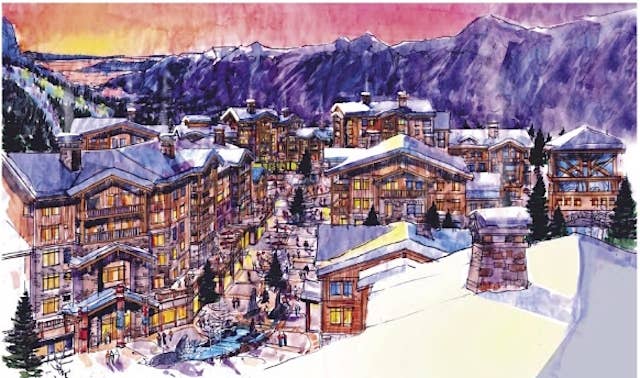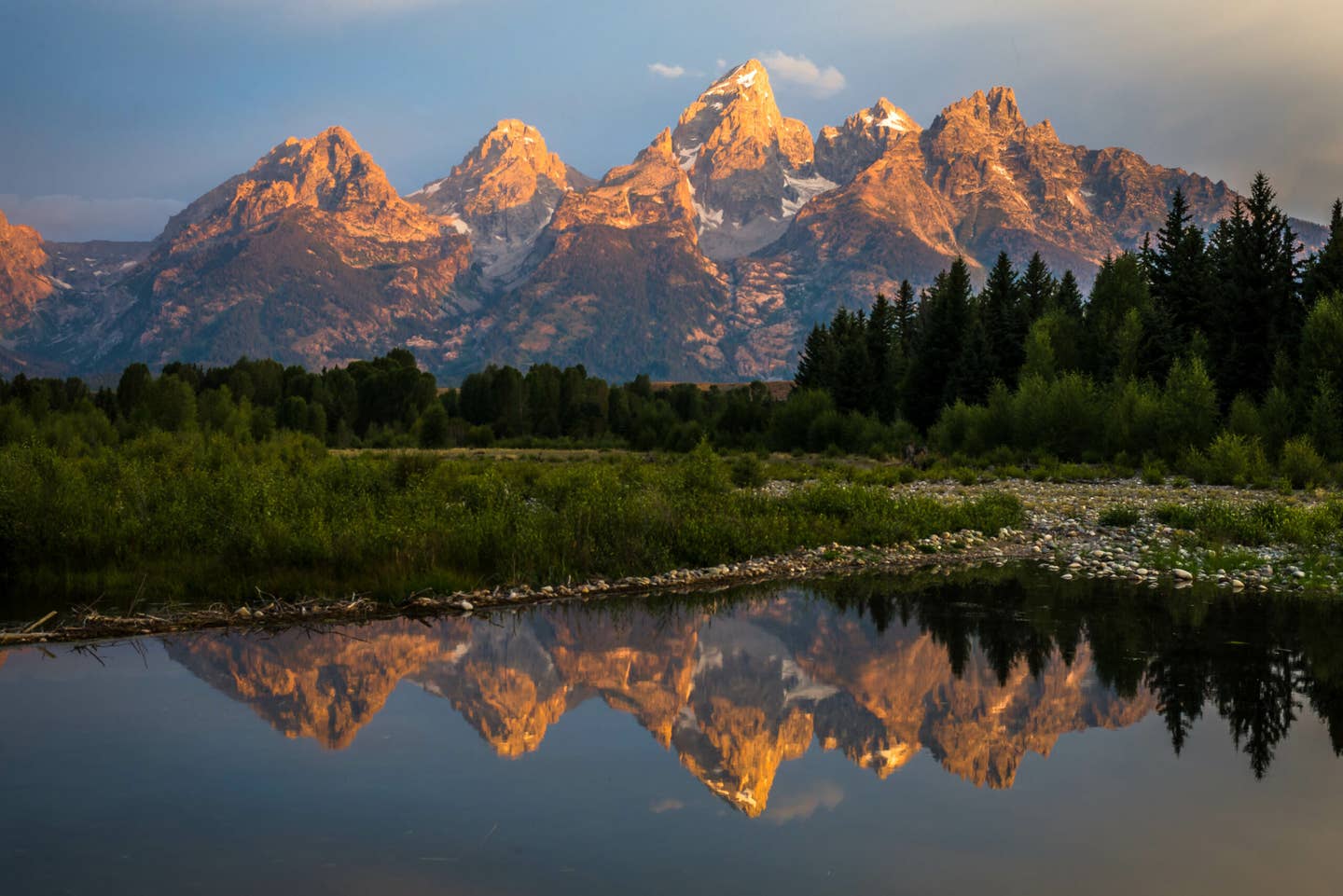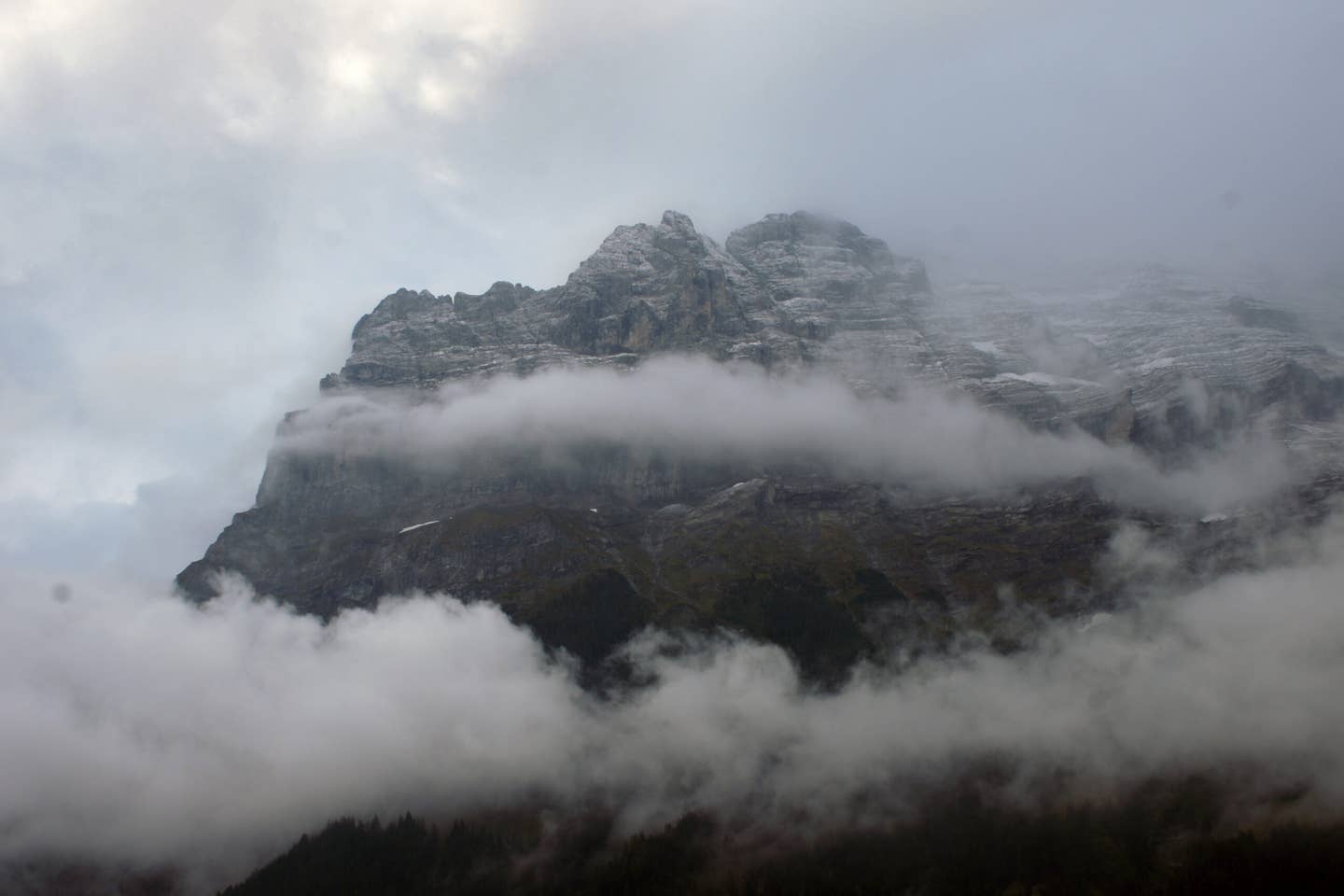

Proposed BC Mega-resort Destined to Fail & Hurt Whistler
Popular Stories

This is how the Garibaldi at Squamish Village is expected to look once construction is completed. Aquilini Investment Group photo.
Since 1996, a mega-resort called Garibaldi at Squamish (GAS) has been proposed on Brohm Ridge near Squamish, BC, about an hour south of Whistler/Blackcomb. Yet, the area in which developers hope to start the $3.5 billion project has been rejected by numerous experts as unsuitable for a ski resort due to lack of snow, poor terrain and a lack of demand. To the surprise of many activists and Squamish area residents, GAS was granted its Environmental Assessment Award (EAA) earlier this January. Although the EAA was given with conditions, it marks progress in what had appeared to be a stagnant project.
“We were pretty confident it wouldn’t go through, there are just so many problems with it," Devon Campbell, Environmental Officer of the University of British Columbia Varsity Outdoors Club (VOC). The VOC is a member club of the Federation of Mountain Clubs of BC (FMCBC), which also opposes GAS.
"It seems like it was passed because of all of the potential economic benefits, but somehow no one is asking ‘What happens when this thing fails?’ And it probably will fail; it doesn’t have what you need in a destination ski area.”
In a 14-page letter to the Environmental Assessment Office, Whistler Blackcomb President & CEO David Brownlie outlined a series of problems with the proposed resort, stating that Whistler does not support the GAS project and sees it a “high risk project with significant information gaps.”
“Our view is that GAS will damage our province’s reputation and undermine its success as a world-class ski destination," Brownlie said in the letter. "We further contend that GAS will have a negative impact on Whistler Blackcomb’s recognition as an iconic destination." Duh.
"It appears to all of us in the industry that the proponents are simply using the Commercial Alpine Ski Policy as a vehicle to access crown land for development at a below market price,” Brownlie wrote later on.
There’s no demand for GAS
 View while backcountry skiing near Brohm Ridge. Zack Wentz photo.
View while backcountry skiing near Brohm Ridge. Zack Wentz photo.
A major concern for Brownlie, Campbell, the VOC and the FMCBC, is that the number of skiers in North America is not growing, therefore the skiers projected to visit GAS will likely be doing so in exchange for other B.C. ski resorts, such as Whistler - as such, they will hardly be allowing for new job creation or more tax revenue for the province.
The GAS master plan claims a new market will be created with the completion of the Brohm Ridge development, but Whistler’s CEO disagrees.
“Contrary to the Proponent’s position, recent history shows that there is no correlation between the development of new ski resorts and the creation of new skier visits,” Brownlie wrote.
In fact, despite the $2.4 billion invested in U.S. ski resorts between 2007 and 2015, the total number of skier visits in the U.S. declined from 55.1 million visits to 53.6 million visits, Brownlie wrote.
Also, destination skier visitation to B.C. decreased from 2.4 million in 2007/08 to 1.4 million in 2012/13, according to Brownlie.
The terrain is unsuitable for skiing

The Garibaldi at Squamish Master Plan outlines the development of Brohm Ridge like this. Garibaldi at Squamish Master Plan photo.
The site proposed for GAS has been labeled unworthy for a ski area since the first survey was conducted on it in 1974 by Sno-Engineering Inc. who said the natural constraints to development were so significant that resort development is hardly a valid consideration.
The terrain is fairly upside down and disjointed, with low-angle terrain at the top of the ridge followed by steep, complex terrain underneath it. These features make it difficult to create ski runs which can cater to a single skier level.
VOC member and local rock climbing guide Zack Wentz, also stated that there is quite a bit of concern about the access GAS lifts will provide to backcountry ski runs in Garibaldi Provincial Park.
“You need to know crevasse rescue and extreme mountaineering skills to enter the backcountry from there. It’s not like a lot of other sidecountry areas people are used to and we don’t have a culture like Chamonix where people are prepared to handle that kind of risk,” Wentz said.
There isn’t enough snow
 Cypress Mountain demonstrates that "top to bottom skiing" is possible during their 2014/15 season. Cypress Mountain Instagram photo.
Cypress Mountain demonstrates that "top to bottom skiing" is possible during their 2014/15 season. Cypress Mountain Instagram photo.
Although people will be apt to ski poor terrain if the snow is truly outstanding, the likelihood that the snowfall on GAS will be anything above mediocre is fairly low.
Even back in 1974 – before climate change had really begun to affect mountains snowpacks – Sno-Engineering, Inc. said that “climatology considerations would rule out reliable skiing on the lower thousand feet of vertical even if the terrain were skiable.”
Today, over 40 years later, the outlook for snow in the lower elevations around western British Columbia has not changed for the better.
GAS’ proximity to the ocean and its elevation are similar to three other local mountains, Garibaldi, Cypress, and Seymour, all of which only offered limited skiing in 2013/2014 and 2014/2015. The lowest lift at GAS would also be located 820 feet below the lowest lift at these other three mountains, Brownlie noted.
The GAS project prefers to liken itself with the location of Whistler Mountain, yet Whistler is located 27 miles further inland and 16 miles north of Brohm Ridge. Whistler is also sheltered from the direct influence of Howe Sound, making the comparison misleading and even irrelevant, Brownlie wrote.
Burden on Squamish
Expert ski resort planner Paul Mathews estimates that GAS only needs about half of the beds it's projected to build. Thus the calculations for the resorts economic viability are incorrect and Brownlie believes GAS will not be economically feasible with this lower occupancy.
Should GAS fail, the burden will be on the people of Squamish to accept the physical and financial impacts of a large-scale failed development.
Also, if GAS succeeds and is able to hit their intended capacity, they will nearly double the current population of Squamish. This increase is guaranteed to lead to more traffic collisions along highway 99, according to the EAA.
It is unknown how the proposed resort will impact the town of Squamish’s schools, fire department, medical facilities and staff, and police force, along with other public municipalities.
Yet, the emergency medical staff in Squamish is already overwhelmed dealing with the current increase in backcountry accidents due to the improved backcountry access with the creation of the Sea to Sky Gondola (a gondola designed to bring hikers and skiers further into Garibaldi Provincial Park), Wentz said.
First Nations Concede
Sign Up For Our Newsletter
The Squamish Nation has a longstanding history with Brohm Ridge, and Squamish community members use the area to gather plants, hunt game, and fish, as well as for gatherings, trading and ceremonial purposes. The oral traditions and use of this land is still happening although the use of the area has been hindered by government regulations and the creation of Garibaldi Provincial Park, according to the GAS Master Plan.
“Present day Squamish Nation members have a sense of alienation to the area since the forestry, mining, recreational activities and road construction to area of Brohm Ridge and Nch’kay/Mount Garibaldi,” the GAS Master Plan says.
The Squamish Nation has been involved in ongoing negotiations with the proponents of Garibaldi Resort and has secured that a percentage of the total employees be members of the Squamish Nation, along with other economic benefits should GAS succeed.
“By ensuring that [our] values are upheld in this project and that benefits are flowing to the nation, we felt that was a way to build relations and start correcting some of the past status quo of just simple marginalizing First Nations and having the province making these decisions on top of our rights and titles,” Squamish Nation Chief, Ian Campbell told CBC News.
Habitats Still Compromised
 View of Brohm Lake. D'arcy Mcleish photo.
View of Brohm Lake. D'arcy Mcleish photo.
Brohm Ridge was identified by the GAS Master Plan as a home, migration pathway and vital feeding ground to Black Bears, Grizzly Bears, Mountain Goats, Coyotes, Bobcat, Cougar, Gray Wolf, Black-Tailed deer, two Squirrel species and 58 bird species.
The GAS Master Plan claims that the probability of Grizzly Bear-human conflicts is low because the population of Grizzlies is low (the regional population is listed at 27). Yet the plan does nothing to mitigate further impact to this population despite noting that the Brohm Ridge area could be a vital linkage for the existing Grizzlies to travel between Whistler and Squamish to reach the lower Squamish River, where high concentrations of spawning salmon can be found.
With the development of Brohm Ridge, there is increased potential for Black Bear-human and Grizzly Bear-human conflicts, as there is a known den just outside of the property. In addition human development would disrupt the habitats of Wolverine, Cougar, and small mammal species such as Douglas Squirrel and Northern Flying Squirrel.
The GAS Master Plan also first claims only a “potential slight impact on mountain goats,” yet it later says Brohm Ridge is used as a migration corridor by goats to get access into Garibaldi Provincial Park for the summer. It also includes input from the Squamish Nation who call Brohm Ridge “excellent Mountain Goat habitat.”
What’s next?
With its Environmental Impact Assessment granted, the GAS project is one step closer to being completed, yet it is not unstoppable.
The Environmental Impact Assessment provides opportunities for all interested parties to be involved, mandates consultation with First Nations, includes technical studies to identify adverse effects and summarizes the findings of these studies for the public.
Yet in order for GAS to be built, approval from the local government is mandatory as well.
“At this point it is mostly up to the local government and the people of Squamish to take it upon themselves to stop the project. The provincial government has said its piece and handed power down to the locals,” Campbell said.
Campbell believes the best way to prevent GAS from being built is to get it more exposure. The Environmental Impact Assessment was granted on a Friday afternoon and kept fairly quiet even by local media, Campbell said.
The proponents won't see local approval for at least two years, and it's unknown when first public events will be held for comment, the Squamish Chief
reported.
“It is very difficult to find a timeline on what’s going to happen next and exactly how it will happen, so in the meantime we just need to make sure people are talking about it and getting educated on what the impact of GAS will really mean to our community,” Campbell said.
Important Links:
To see the whole GAS Master Plan click
here
More on the
Minister's decision about GAS
Whistler CEO David Brownlie’s
letter
For more information on saving Brohm click
here
To see the online petition to stop GAS click
here



